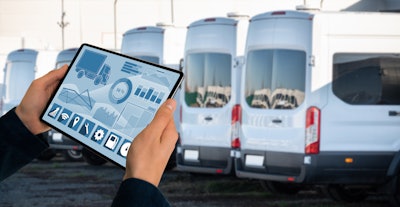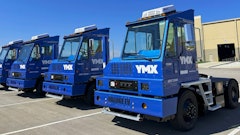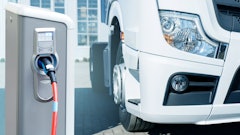
As supply chains are growing more complex, logistics companies face fleet maintenance and management challenges. Objective market factors, such as qualified driver shortage and fuel price increases, complicate fleet management even further.
Companies can streamline this business aspect by developing logistics software for vehicle data analytics. Connected to GPS, Internet of Things (IoT) devices, and other types of sensors, such software enables logistics professionals to gather and analyze vehicle telemetry data and then optimize fleet performance and costs.
Here are five ways vehicle telemetry analytics can streamline fleet management.
Route optimization
By collecting telemetry data such as GPS coordinates, logistics professionals can determine the location of a particular vehicle in real-time, which is essential for fleet visibility. Moreover, processed by a vehicle analytics solution after the trip is completed, this data can help improve routing.
In the most basic scenario, fleet managers can analyze historical telemetry data to identify those parts of a route where vehicles move slower due to high traffic, road works, or other reasons. Fleet managers can also take this information into account when creating new routes, which can result in improved transportation speed and increased volumes of goods transported.
Additionally, logistics companies can enable real-time route optimization by equipping their analytics solutions with machine learning capabilities and integrating them with additional data sources, such as weather forecasts or news sources about road closures. Thus, companies can optimize routes on the fly, tailoring them to ever-changing external conditions.
Driver management
According to the 2022 Global Driver Shortage Report from IRU, the logistics sector needs more than 2.6 million professional drivers. Since logistics companies face such dramatic staff shortages, effectively managing existing skilled drivers becomes more critical than ever. Fortunately, vehicle telemetry analytics can help companies partially mitigate this challenge.
In particular, fleet managers can track and analyze parameters such as average speed and the number of sharp braking and accelerations to identify drivers with the best driving skills. Managers can allocate these drivers to more demanding or long routes and reduce transportation risks related to human factors. In turn, companies can detect what drivers don’t perform well and have them undergo upskilling training, which can help improve their performance and reduce the number of accidents.
Fuel management
Logistics managers can get real-time visibility into fuel consumption across their fleet by analyzing fuel tank telemetry data. For example, they can track the total amount of fuel consumed over a given period (month, year, etc.), fuel consumption per day, and fuel consumption for each vehicle.
In addition, telemetry data allows fleet managers to monitor and reduce idling, which is a critical factor in fuel consumption. A vehicle data analytics solution can generate fuel consumption reports, allowing managers to understand how much fuel precisely this or that vehicle is wasting due to idling.
Moreover, such a solution can alert fleet managers when a vehicle idles excessively. Upon receiving such an alert, the manager can contact the driver and ask them to turn off the engine to prevent unnecessary fuel consumption.
A robust vehicle data analytics solution can also analyze fuel consumption in real-time, automatically notifying the driver when to refuel and suggesting how much fuel is needed to finish a route. This way, companies can ensure that drivers always have enough fuel to complete their routes.
Preventive maintenance
Routine mechanical vehicle inspections can be too time-consuming and ineffective, especially for companies with large fleets consisting of tens or hundreds of vehicles. Companies can instead set up preventive maintenance practices by collecting and analyzing vehicle telemetry data.
For example, fleet managers can monitor parameters such as engine temperature or fuel consumption to gain real-time information about each vehicle’s state. If technical problems are identified, fleet managers can simply initiate an inspection of the vehicle without waiting for the scheduled one.
Additionally, companies can implement predictive analytics to switch to a more proactive maintenance approach. Predictive maintenance allows companies to detect and mitigate multiple technical issues in advance, create more efficient repair schedules, and minimize vehicle downtime.
Theft prevention
Logistics companies can use vehicle telematics data to better manage car theft. As noted earlier, vehicle data analytics systems can identify patterns in driver behavior by tracking parameters, but this data can also serve as driver authentication.
If someone steals a vehicle, an analytics solution can compare the driving style to a person who usually drives the vehicle and find anomalies. Later, such a system can automatically notify logistics managers so that they can take measures and help detain a thief before they escape or damage the vehicle.
Final thoughts
As market conditions tighten, logistics companies can find it increasingly difficult to manage their fleets efficiently, especially if their supply chains are so complex. Fortunately, companies can improve multiple aspects of fleet management, including route optimization and fuel management, by implementing vehicle telemetry analytics software.
However, the shift toward data-driven fleet management can also be challenging, as logistics teams must step out of their comfort zone and adapt to new workflows, especially if they haven’t worked with vehicle analytics. To make this transformation smoother, a company needs to adopt a change management strategy before software implementation. It can also turn to third-party logistics technology experts to identify potential risks associated with the change and develop a more tailored and efficient strategy.


















